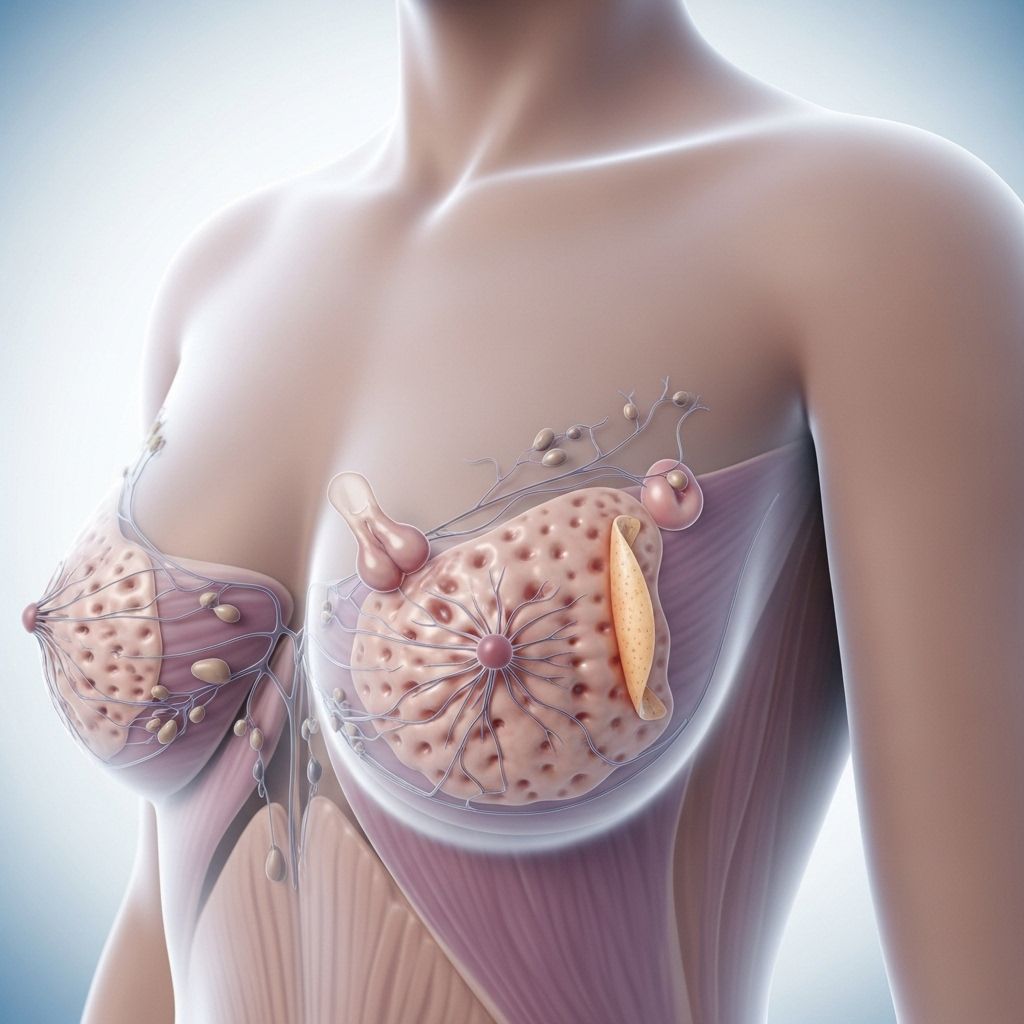Recognizing Breast Cancer: Early Signs, Symptoms, and What to Do Next
Awareness of subtle breast changes empowers timely medical evaluation.

Early Signs of Breast Cancer: What You Need to Know
Breast cancer is among the most common cancers worldwide, affecting millions each year. Early detection remains one of the key factors that improve treatment success and survival rates. Recognizing the wide spectrum of early signs and symptoms of breast cancer empowers individuals to seek medical guidance promptly and advocate for optimal care.
Why Early Detection Matters
Spotting breast cancer symptoms early not only increases the chances of effective treatment, but it also reduces the risk of the disease spreading. While regular screening plays a critical role, awareness of the body’s changes is equally important for prompt diagnosis.
- Screening programs, such as mammograms, can detect cancer before symptoms appear.
- Noticing physical changes in your breasts enables earlier medical evaluation.
- Mild or subtle symptoms should never be dismissed; always consult your healthcare provider if you detect any new or persistent changes.
Common Symptoms of Breast Cancer
Many people associate breast cancer mostly with the discovery of a lump in the breast, but the disease can present with a wide variety of symptoms. According to clinical research, about one in six women with breast cancer initially present with symptoms other than a breast lump. Awareness of both typical and less common signs ensures that more cases are caught early.
- Breast Lump: The most frequent symptom, found in about 83% of cases. Lumps can vary in texture, size, and mobility, and may or may not be painful.
- Change in Breast Shape or Size: Swelling, asymmetry, or unexplained changes in contour.
- Skin Changes: Dimpling, puckering, or thickening of the breast skin. Rare, subtle changes such as a minuscule dimple can signal underlying cancer and may be easily missed.
- Nipple Abnormalities: Inversion, retraction, or changes in the appearance of the nipple.
- Nipple Discharge: Any unexpected discharge, especially if bloody or clear.
- Persistent Breast Pain: Ongoing tenderness, pain in an area that doesn’t resolve, or discomfort not tied to the menstrual cycle.
- Swelling Around the Armpit or Collarbone: May indicate lymph node involvement.
Less Common and Atypical Breast Cancer Symptoms
Several breast cancer cases first present with less obvious symptoms, which may contribute to delays in diagnosis. These can include:
- Breast Pain: Occurs in about 6% of patients as an initial symptom.
- Nipple Changes: Abnormalities such as crusting, scaliness, or eczema-like rashes.
- Back Pain or Bone Pain: While rare, pain in areas away from the breast can sometimes signal metastatic disease.
- Unexplained Weight Loss or general feeling of being unwell.
It’s important to note that while the majority of breast lumps are benign (non-cancerous), any new symptom should be checked by a healthcare provider. Waiting for several weeks without resolution is a sign to take action.
How to Check Your Breasts: A Step-by-Step Guide
Self-examination is a simple, empowering way to monitor your breast health between screenings. Experts recommend becoming familiar with what is normal for your body so subtle changes are more apparent.
- Stand undressed from the waist up in front of a mirror with arms at your sides.
- Observe both breasts for symmetry, any skin changes, or visible swelling.
- Raise arms over your head and look for any puckering or dimpling of the skin or nipple.
- Gently press each breast in a circular motion, using finger pads, covering the entire area from the collarbone to below the bra line and from the armpit to the middle of the chest.
- Feel for lumps, thickened tissue, or unusual areas.
- Check the armpit and collarbone region for any swelling or lumps.
- Repeat the process while lying down for a different perspective.
If you notice any change, schedule a visit with your GP promptly.
Table: Typical vs Atypical Presenting Symptoms of Breast Cancer
| Symptom Type | Description | Frequency |
|---|---|---|
| Breast Lump | Solid, distinct area within the breast tissue | Most common (83%) |
| Non-Lump Breast Symptoms | Nipple abnormalities, breast pain, skin changes, etc. | About 17% |
| Non-Breast Symptoms | Back pain, weight loss, fatigue | Rare (<2%) |
What Should I Do If I Notice Symptoms?
- Do not panic—most breast changes are not due to cancer, but prompt evaluation matters.
- Make an appointment with a healthcare practitioner. They may order tests such as a physical exam, mammogram, ultrasound, or biopsy, depending on your situation.
- If you are unsure, keep a symptom diary and ask for advice from your medical team.
- Continue with routine screenings as recommended based on your age and risk profile.
Delaying Help: The Risks and Realities
Clinical research shows that individuals who present with atypical breast symptoms (without a lump) often delay seeking medical attention longer than those with the classic lump. Such delays can pose real risks, so it is vital to prioritize your health and reach out to your doctor if symptoms persist for weeks.
Who Is at Risk?
Breast cancer can affect anyone, regardless of gender, though women are at higher risk. Factors such as age, family history, genetics, hormonal exposure, and lifestyle may contribute.
- Women over 50 are at greater risk, though young women and men can also develop breast cancer.
- Family history increases risk—knowing your family’s medical background is valuable.
- Genetic mutations (like BRCA1 or BRCA2) account for some cases.
Dispelling Myths About Breast Cancer Symptoms
- Myth: Only lumps matter.
Fact: Non-lump symptoms are important and should never be ignored. - Myth: Breast pain is always harmless.
Fact: Persistent pain warrants evaluation. - Myth: Men can’t get breast cancer.
Fact: Breast cancer affects men too, though much less commonly.
Support Resources for Breast Cancer Awareness
- Charities and Organizations: CoppaFeel, Cancer Research UK, Breast Cancer Now.
- Breast Clinics: Specialized teams offer diagnosis, treatment, and support for anyone with concerns.
- Information Hotlines: Medical teams are available for advice and guidance.
Frequently Asked Questions (FAQs)
Q: How often should I check my breasts?
A: Experts recommend performing a self-exam monthly and being aware of your normal breast texture and appearance. Attend recommended routine screenings such as mammograms based on age and risk.
Q: Should I see a doctor if I only have mild pain or skin changes?
A: Yes. Any new, persistent symptom—including mild or subtle pain, itching, redness, or dimpling—should be checked by a medical professional, especially if it lasts for more than three weeks.
Q: Are most breast lumps cancerous?
A: No. The majority (about 90%) of breast lumps are benign, but it’s essential to have any new lump evaluated to exclude cancer.
Q: How can I lower my risk of breast cancer?
A: Maintaining a healthy lifestyle, limiting alcohol, avoiding tobacco, exercising regularly, and attending routine screenings are all helpful measures. For those with significant family history, discuss genetic counseling with your medical provider.
Q: What is inflammatory breast cancer?
A: A rare but aggressive form, characterized by redness, swelling, dimpling, and sometimes pain. It often progresses rapidly and requires urgent attention.
What to Expect at Your Doctor’s Appointment
If you schedule a visit for breast symptoms, your clinician will ask detailed questions about your medical and family history, perform an exam, and may order diagnostic tests. Ensure you communicate all observed changes, their duration, and any additional symptoms.
- Physical breast exam covering both breasts and surrounding tissue
- Possible referral for imaging (mammogram or ultrasound)
- Discussion of risk factors
- Information about next steps depending on findings
How Breast Cancer Treatment Is Determined
Treatment plans are personalized based on diagnosis, cancer type, stage, genetic factors, and patient preferences. Options include surgery, chemotherapy, radiotherapy, hormonal therapy, and targeted biological therapies. Early-stage cancers may require less intensive treatment, reinforcing the value of early detection.
Conclusion: Take Charge of Your Breast Health
Being proactive—through monthly self-checks, regular clinical exams, and prompt action when changes occur—can make all the difference. Breast cancer symptoms are diverse, so knowledge and vigilance are vital at every age. Supporting each other in awareness ensures that more people benefit from early intervention and compassionate care.
References
- https://www.ucsfhealth.org/covid/17-cancer-symptoms-you-shouldnt-ignore
- https://www.goodhousekeeping.com/uk/health/health-advice/a562502/dimpling-breast-cancer-symptom/
- https://pmc.ncbi.nlm.nih.gov/articles/PMC5482318/
- https://womanifestosite.wordpress.com/2018/05/19/ive-given-myself-cancer-an-analysis-of-the-effect-of-the-content-of-good-housekeeping-on-breast-cancer-stigma-by-mary-devellis-21/
- https://www.goodhousekeeping.com/health/a39300237/breast-cancer-signs-and-symptoms/
- https://nybra.com/our-practice/insights-events/breast-cancer-facts-you-should-know-from-good-housekeeping/
- https://my.clevelandclinic.org/health/diseases/3986-breast-cancer
- https://www.ironwoodcrc.com/compassionate-cancer-care-for-every-patient-as-seen-in-good-housekeeping-and-womans-day/
- https://pocketmags.com/ca/good-housekeeping-magazine/oct-25/articles/-boobs-don-t-define-us-as-women
Read full bio of medha deb












